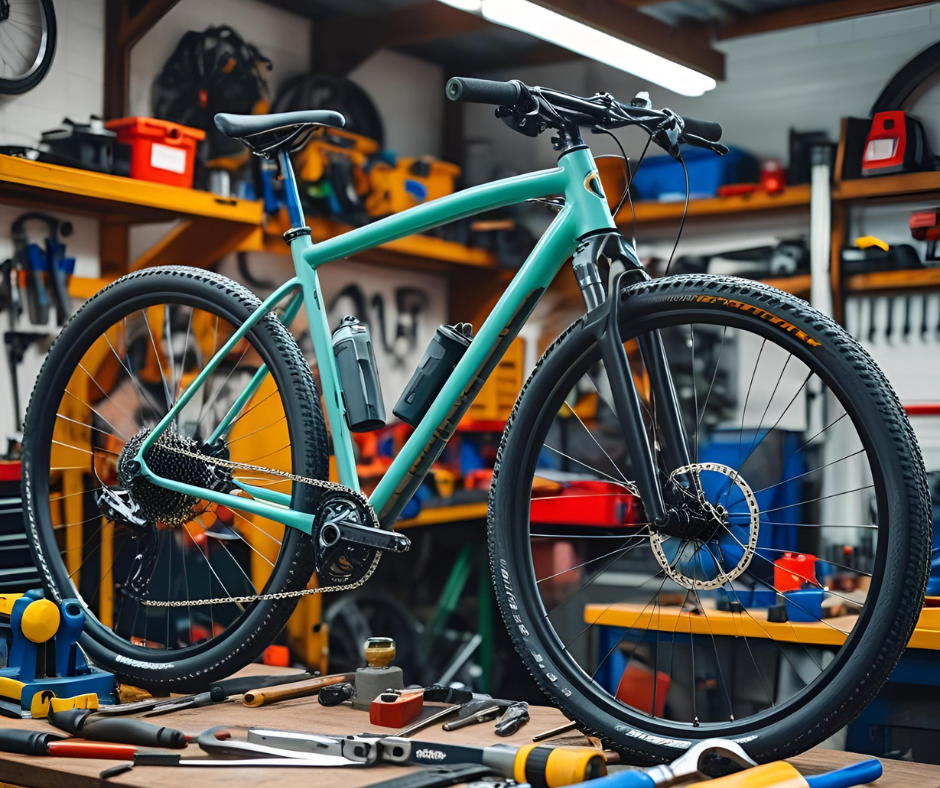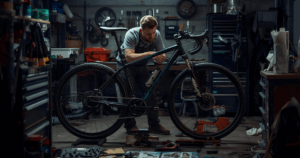Whether you’re a daily commuter, weekend trail rider, or casual park cruiser, proper bike maintenance is essential to keep your two-wheeled companion in top shape. Like any machine, a bicycle performs best when it’s cared for consistently—and neglecting the basics can lead to costly repairs or dangerous breakdowns.
This comprehensive guide will walk you through everything you need to know about bike maintenance, from routine inspections to specific part care, and even how to extend the life of your components. Let’s get your ride rolling safely and smoothly for the long haul.
Why Bike Maintenance Matters
Good bike maintenance does more than just make your ride quieter and smoother—it enhances safety, improves efficiency, and preserves your investment. A well-maintained bike will respond better, brake faster, and help prevent accidents caused by mechanical failures.
Routine care also reduces the likelihood of expensive repairs. For example, failing to lubricate your chain can lead to premature drivetrain wear, while ignoring tire pressure can damage the rims. Regular bike maintenance can help you spot issues early and fix them before they escalate.
Essential Bike Maintenance Tools
Before diving into maintenance tasks, it’s worth having a small home toolkit on hand. Basic bike maintenance doesn’t require a full workshop, but a few essentials include:
- Bike pump with pressure gauge
- Hex/Allen wrench set
- Chain lubricant
- Chain checker tool
- Tire levers
- Cleaning brushes
- Degreaser
- Torque wrench
These tools cover most minor bike maintenance jobs and can save you trips to the bike shop for simple fixes.
The Pre-Ride Checklist
Developing a quick habit of running through a pre-ride check is a smart way to practice regular bike maintenance. Here’s what to look for:
- Tire Pressure: Inflate tires to the recommended PSI, which is typically printed on the tire sidewall.
- Brakes: Squeeze both levers to ensure they engage smoothly and stop the bike.
- Chain & Drivetrain: Check for lubrication and any visible rust or debris.
- Wheels: Spin the wheels to see if they wobble or rub against the brake pads.
- Quick Releases: Make sure skewers or thru-axles are tight and secure.
Performing this quick scan takes less than two minutes but is a huge part of daily bike maintenance.
Cleaning Your Bike
Keeping your bike clean is not just about looks—dirt and grime can interfere with mechanical performance. A proper bike maintenance routine includes regular washing.
How Often Should You Clean It?
- After riding in the rain or mud
- After 2–3 long rides in dry weather
- Monthly if only used casually
Cleaning Tips:
- Use a bucket of soapy water and soft brushes for the frame.
- Avoid high-pressure water, which can damage bearings.
- Degrease and relube the chain during each wash.
Consistent cleaning is a simple bike maintenance habit that makes inspection and upkeep much easier.
Chain Care: Lubrication and Replacement
Your bike’s chain is arguably the most important component when it comes to bike maintenance. A dry or dirty chain can affect your pedaling efficiency and wear out your cassette and chainrings.
Lubrication:
- Use a bike-specific lubricant, not WD-40.
- Apply a drop to each chain link while rotating the cranks.
- Wipe off excess with a cloth.
Replacement:
- Check chain stretch using a chain wear indicator.
- Most chains last between 2,000–4,000 km, depending on use and conditions.
Neglecting chain care can lead to full drivetrain replacements—making chain upkeep a critical bike maintenance step.
Brakes: Pad Wear and Adjustment
Brakes are vital for safety, so they require regular bike maintenance. Whether you’re using rim brakes or disc brakes, here’s what to watch:
Rim Brakes:
- Inspect pads for wear grooves.
- Replace if worn down to indicator lines.
- Ensure pads align correctly with the rim.
Disc Brakes:
- Check for contamination (squealing is often a sign).
- Pads should be replaced when less than 1 mm of material remains.
- Check rotor straightness and cleanliness.
Brakes should feel firm when applied. Spongy or weak braking is a sign that immediate bike maintenance is required.
Gears and Drivetrain Tuning
Smooth shifting is not just a luxury—it’s part of core bike maintenance. Misaligned derailleurs or stretched cables can lead to dropped chains or skipping gears.
Maintenance Tips:
- Inspect the derailleur hanger for alignment.
- Lube pivot points with a light lubricant.
- Adjust cable tension using the barrel adjuster.
If you’re hearing clicking sounds while riding, it’s time for some bike maintenance on your gear system. Don’t ignore gear issues—they often worsen with time.
Tires and Wheels
Your tires and wheels are where the rubber meets the road, literally. Routine bike maintenance in this area helps prevent flats and keeps your ride stable.
Tire Tips:
- Check for embedded glass or debris.
- Inspect sidewalls for cracks or bulges.
- Replace worn tires with little to no tread left.
Wheel Tips:
- Ensure spokes are tight and wheels are true.
- Check hub bearings for smoothness.
- Lubricate hubs periodically or get them serviced.
Tire blowouts and wobbly wheels are not just inconvenient—they’re dangerous. Keep this part of bike maintenance a regular priority.
Frame and Bolts
Your bike’s frame and the bolts that hold it all together need occasional attention. As part of your bike maintenance, look for:
- Cracks or dents in the frame (especially near welds)
- Rust or corrosion on steel parts
- Loose bolts on stems, handlebars, crankarms, and seatposts
Use a torque wrench to ensure bolts are tightened to the manufacturer’s specs. Over-tightening is just as bad as under-tightening and can damage components. Structural integrity is key, and it’s often overlooked in bike maintenance routines.
Suspension (If Applicable)
If your bike has front or full suspension, bike maintenance becomes more technical. Suspension components are precision systems that need proper care to function well.
Maintenance Includes:
- Cleaning stanchions and seals
- Checking for oil leaks
- Servicing internals based on riding hours (usually every 50–100 hours)
Neglecting suspension bike maintenance can lead to poor performance and very expensive repairs. If in doubt, bring it to a professional.
Seasonal Bike Maintenance Checklist
Doing a full bike maintenance review at least once per season is a smart move. Here’s a simplified seasonal checklist:
Spring:
- Inspect for winter rust or wear
- Replace worn tires
- Check drivetrain and brakes
Summer:
- Clean and lubricate more frequently
- Inspect for heat-related wear
Autumn:
- Look for leaves and mud clogging gears
- Clean drivetrain more often
Winter:
- Use anti-rust sprays if storing outdoors
- Inflate tires more regularly due to pressure loss
Think of these seasonal habits as your bike maintenance master plan.
When to Go to the Bike Shop
While you can maintain a lot of bikes at home, some jobs require professional tools or experience. Seek a mechanic for:
- Hydraulic brake bleeding
- Wheel truing or spoke replacement
- Bottom bracket or headset replacement
- Suspension rebuilds
- Electronic shifting system calibration
There’s no shame in bringing your bike in. Even pros get help. It’s still part of smart bike maintenance planning.
Maintenance Tips for E-Bikes
If you ride an e-bike, your bike maintenance routine needs to include electrical components. While many parts are similar to regular bikes, the motor and battery systems require extra care.
- Charge batteries in cool, dry areas
- Avoid water exposure near motor connections
- Get software updates if your system supports it
- Inspect wiring and sensor cables for damage
E-bikes are incredible tools for commuting and recreation—but they demand responsible bike maintenance due to their complexity.
Make It a Habit: Maintenance Scheduling
One of the most effective ways to keep up with maintaining bikes is to set a recurring schedule. Here’s a suggested timeline:
- Before every ride: Check tires, brakes, and chain
- Weekly: Wipe down bike, relube chain
- Monthly: Inspect bolts, pads, cables
- Quarterly: Deep clean, drivetrain check
- Yearly: Full tune-up at a bike shop
Scheduling regular check-ins makes bike maintenance easier and ensures nothing important gets missed.
Conclusion
In the world of two wheels, a little care goes a long way. Bike maintenance isn’t just about preventing breakdowns—it’s about building a relationship with your ride, extending its life, and getting the most joy out of every journey.
Whether you’re a seasoned rider or just starting out, integrating routine bike maintenance into your lifestyle means fewer surprises and more miles of smooth cruising. Keep your bike happy, and it’ll return the favor with every spin of the wheels.





